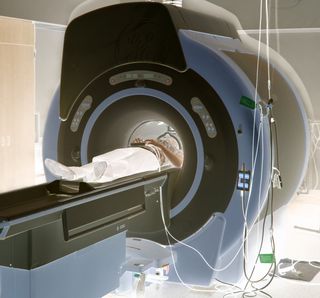DEPRESSION,ANXIETY CAN BE DIAGNOSED BY SPECIAL TYPE OF MRI
prof .DRRAM,HIV /AIDS,HEPATITIS ,SEX DISEASES & WEAKNESS expert,New Delhi,India, profdrram@gmail.com,+917838059592,+919832025033,ON WHATSAPP
It's widely recognized that psychiatric conditions like depression and anxiety disorders are based in the brain. Scientists have even started to discover which brain areas are involved in different conditions. For example, post-traumatic stress disorder(link is external) (PTSD) seems to involve excessive activity in the amygdala, which is involved in processing fear, as well as low activity in certain parts of the frontal lobes.
Much of the evidence for the role of specific brain areas in psychiatry comes from "brain imaging," which involves various ways of looking at the brain. Some technologies like PET imaging and functional MRI can measure the activity of the brain either at rest or while a person does certain tasks. Other technologies, like traditional MRI, measure the brain's structure—its size and shape.
Given how much we've learned about the role of the brain in mental illness, many people are surprised to learn that we can't know what psychiatric diagnosis a person has—or even if the person has any diagnosis—by examining that person's brain. there's a lot of variation in brain activity among people with the same diagnosis (and without that diagnosis). When we say that brain activity looks a certain way "in people with PTSD," what we really mean is average brain activity in a group of people with PTSD versus average brain activity in a group of people without PTSD.
Several factors make it hard to diagnose a person with a psychiatric condition based on brain imaging. similar brain areas (link is external) are involved in different psychiatric conditions. For example, high activity in the "emotion centers" of the brain and low activity in parts of the frontal lobes is common across anxiety conditions, PTSD, schizophrenia, spouse abusers, and even among healthy individuals who are sleep deprived. It's impossible to say what someone's diagnosis is based on brain imaging when the same areas seem to be involved in various conditions.
Different psychiatric conditions often share similar symptoms. For example, ADHD and depression can both involve difficulty with concentration, while irritability can be a symptoms of both bipolar disorder and generalized anxiety disorder.
Psychiatric conditions can look quite different in different individuals. Take depression, for example. There are nine symptoms in the DSM-5, and a person has to have five of them for Major Depressive Disorder. I
- Kidney stones universally present hazard in north india,dillution by water prevent it
- Steroid and placebo effect equally for mild persisting asthma with low sputum eosinophils
- Government wants to fix public healthcare staff shortages with ayush docs: will it work?
- Plea in hc for payment of salaries of edmc, north mcd teachers and doctors
- 7 indian pharma companies named in us lawsuit over inflating generic drug prices
- Woman in up dies after explosion in her mouth during treatment,what is diagnosis?
- Woman in up dies after explosion in her mouth during treatment,what is diagnosis?
- Woman in up dies after explosion in her mouth during treatment,what is diagnosis?
- Air pollution ! mothers organising rally in london,anaesthetist choosing gas,will india follow?
- Cardiac arrest is always not sudden as understood -a study


 Comments (
Comments ( Category (
Category ( Views (
Views (